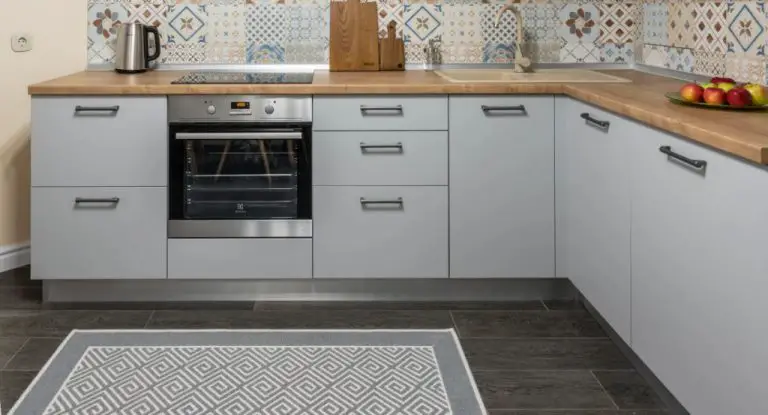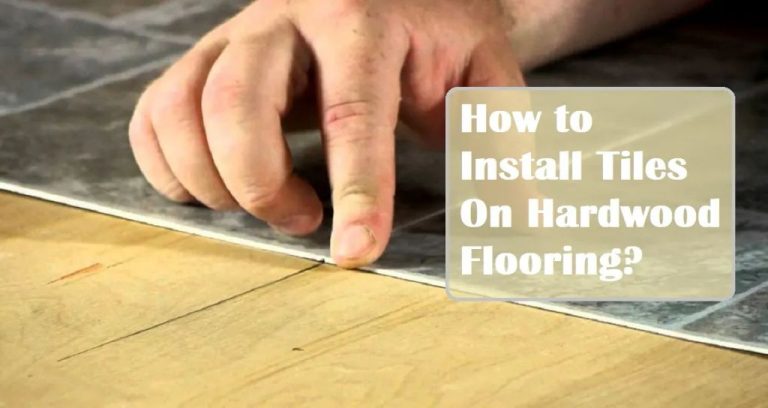What Are The Two Types Of Pottery Wheels?
Pottery wheels have been an essential tool in pottery making for thousands of years. The earliest known pottery wheels date back to Mesopotamia around 3500-3000 BCE. However, the potter’s wheel was likely developed independently in many different parts of the world where pottery was made. Pottery wheels allowed potters to create symmetrical pottery much more efficiently than hand building. The innovation of the wheel was revolutionary for pottery production and allowed more elaborate and delicate ceramics to be produced.
There are two main types of pottery wheels that are commonly used today – kick wheels and electric wheels. Both provide a rotating surface that allows potters to shape clay vessels with their hands as the wheel turns. While they operate differently, kick and electric wheels serve the same essential function in pottery production. Choosing between the two involves factors like cost, speed control, maintenance, and accessibility.
Kick Wheels
Kick wheels, also known as treadle wheels, are manual pottery wheels that are operated using the energy from your feet (Potter’s Passion, 2023). They consist of a heavy flywheel that is set into motion by repeatedly pressing on a foot pedal or treadle attached to the wheel. This spins the flywheel and attached pottery wheel head.
The kinetic energy generated by the potter kicking the treadle is transferred to rotational energy in the flywheel, allowing it to spin freely and smoothly. The rotational speed can be controlled by how fast or slow the potter presses the pedal (Ceramic School, 2023). Faster kicking produces faster wheel speeds.
Some key pros of kick wheels are that they require no electricity, have extremely low maintenance, generate less noise, and allow both clockwise and counterclockwise rotation. However, they do require more physical effort from the potter to operate (Pottery Crafters, 2022).
Overall, kick wheels provide a simple, low-tech way to throw pottery. Their manual operation gives the potter more control and a hands-on experience.
Electric Wheels
Electric pottery wheels are powered by electricity instead of using a mechanical kick wheel or foot pedal. They typically have an electric motor inside the wheel head that spins a drive shaft connected to the wheel head. This allows the potter to simply turn on the wheel with a switch or foot pedal to start and stop the spinning motion.
Electric wheels provide consistent speed control and high torque, allowing potters to center and throw clay with ease. Once set to the desired speed, the rotation stays steady without fluttering or slowing down like kick wheels sometimes do. Electric wheels also provide variable speed options, allowing potters to go from slow to very fast spinning with a simple turn of a dial or press of a button.
Some key advantages of electric pottery wheels include:
– Consistent spinning speed without fluttering [1]
– High torque provides power for centering and throwing [2]
– Variable speed control from slow to very fast
– Low maintenance without need for periodic belt replacements
– Allows potter to use both hands for throwing
However, electric wheels do require access to an electrical outlet, unlike kick wheels. They also tend to be more expensive than basic kick wheels. Maintenance is low, but repairs can be costly if the motor or electrical components break down.
Speed and Control
Kick wheels and electric wheels offer different levels of speed control and responsiveness. With a kick wheel, the potter controls the speed entirely through the motion of kicking the wheel head. This takes practice to master a consistent speed, but allows for very precise speed adjustments in real time (Pottery Kick Wheel vs. Electric). The speed ramps up and slows down directly in sync with the kicking motion.
Electric wheels use a motor to spin the wheel head at a consistent speed. The motor typically has a control box or foot pedal to adjust the speed, often with settings from 0 to 300+ RPM. Electric wheels allow throwing at very fast and constant speeds without the physical effort of kicking. However, speed changes are less responsive than a kick wheel, requiring turning a dial or moving the pedal (Kick wheel, or electric? Which do you prefer and why?).
In summary, kick wheels offer more intuitive and instantaneous speed control through the kicking motion, while electric wheels provide consistency and reduce physical effort at higher speeds.
Cost
There is a significant cost difference between kick wheels and electric wheels. Kick wheels are generally the more affordable option, with basic models starting around $400. High-end kick wheels can cost up to $1000 or more, but most are priced under $600. Electric wheels have a much wider range of pricing. Basic electric wheels start around $600, while high-end professional models can cost $2000 or more [1].

Some key factors that impact the cost of electric wheels are the power and torque of the motor, advanced speed/direction controls, and premium materials and components. Kick wheels have fewer parts and do not require an electric motor, making them simpler and more affordable. However, they require more physical effort from the potter. When choosing between kick and electric, potters should consider their budget, skill level, and anticipated wheel usage [2].
Maintenance
Maintenance requirements differ between kick wheels and electric wheels. Kick wheels are mechanically simpler, with fewer parts that need regular care. Their maintenance involves oiling the wheel head and cleaning the wheel after each use. With just these basic steps, a kick wheel can last decades with proper use.
Electric wheels require more vigilance to keep in good working order. The motor, pedal, and electronic components need occasional inspection and replacement as parts wear out. The wheel head should be cleaned after each use, and the wheel oiled every few months. Replacing parts like the drive belt, wheel head bearing, and speed control when they show signs of wear can extend the life of an electric wheel to 10 years or more.
Overall, kick wheels have lower maintenance demands, with electric wheels requiring more frequent inspections, part replacements, and a higher level of care. But with proper maintenance, both can remain functional for many years of potting.
For more details, see:
https://potterspassion.com/pottery-kick-wheel-vs-electric/
Best Uses
Kick wheels and electric wheels each have advantages that make them better suited for certain projects and pottery styles. According to Pottery Crafters, kick wheels are often preferred for making handbuilt or irregularly shaped pieces that require stopping and starting the wheel frequently. The ability to control the speed through pedaling allows more precision for delicate work. Kick wheels also enable the potter to quickly alter the speed or stop the wheel completely by foot, leaving both hands free for shaping.
Electric wheels excel at throwing round symmetrical pieces like bowls, cups, and vases that require smooth, consistent spinning according to Potter’s Passion. The fixed speed is ideal for pulling up cylinder shapes and allows the potter to focus on centering and forming with both hands. Electric wheels make repetitive production of wheel-thrown ware efficient. Their higher speeds also help shape larger pieces with thinner walls and fine details. Electric wheels are better suited for potters who primarily make wheel-thrown tableware and vessels.
Accessibility
There are some important accessibility considerations when choosing between a kick wheel and an electric wheel for pottery. Kick wheels require the use of leg muscles to turn the wheel, making them difficult or impossible to use for anyone with limited leg mobility or strength (Source). Electric wheels remove this barrier by mechanically turning the wheel, allowing anyone to use them regardless of their physical abilities. However, electric wheels may present accessibility challenges for those who are hard of hearing, as the motor can make significant noise during operation (Source). Ultimately, electric wheels tend to provide better accessibility for most people with disabilities, while kick wheels are restrictive to those with limited leg mobility.
Environmental Impact
Electric pottery wheels tend to have a larger environmental impact than kick wheels because they require electricity to operate. Electric wheels rely on power from the electrical grid, which may come from fossil fuel sources depending on your location. The manufacturing process for electric wheels also utilizes more materials and energy than simpler kick wheels.
Kick wheels are manually operated and do not require any electricity, making them an environmentally friendly option. Kick wheels are relatively simple to construct as they do not contain complex electrical components. The environmental footprint from materials and manufacturing is lower with basic kick wheel designs.
However, kick wheels do require physical effort from the potter to keep the wheel spinning. This can become tiring over long periods. Electric wheels eliminate this manual effort requirement. But the tradeoff is increased energy usage over time while operating the electric motor.
In summary, kick wheels are better for the environment due to being human-powered and having less manufacturing impact. But electric wheels offer an easier and more convenient experience for potters. There are good reasons to consider both options based on your needs and environmental priorities.
Conclusion
In summary, the two main types of pottery wheels are kick wheels and electric wheels. Kick wheels operate by foot power, allowing the potter to control the speed and direction with their foot. They are simpler, more affordable, and don’t require a power source, making them a good choice for beginners, portable use, and those concerned about environmental impact.
Electric wheels use an electric motor to turn the wheel and typically have a pedal or dial to control the speed. They are faster, provide consistent power, and allow potters to use both hands while throwing. However, they are more expensive, require maintenance, and use electricity. Electric wheels may be preferred by experienced potters working on quantity production or large pieces.
When choosing between kick and electric, potters should consider their budget, skill level, workspace, and the type of pieces they want to produce. Both wheel types can produce high quality work in the right hands. Kick wheels provide control and accessibility for beginners, while electric wheels offer speed and ease of use for production potters. With either type, the key is finding the right wheel for your individual pottery needs.



